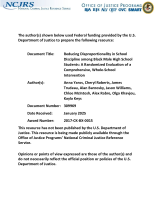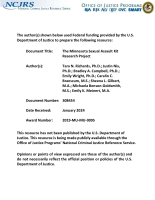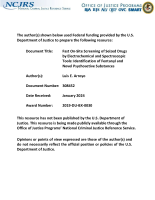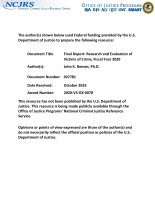Cost analysis
Costs of Penetrating Injury
Using Statistical Models When Interpreting Probation Agency Performance - A Brief Exploration of Queueing Theory, Linear Programming, and Cost Function Applications
Economy - Minnesota Community Corrections Act Evaluation
A Mixed-Methods Approach for Embedding Cost Analysis Within Fidelity Assessment in School-Based Programs
Reducing Disproportionality in School Discipline among Black Male High School Students: A Randomized Evaluation of a Comprehensive, Whole-School Intervention
The Collection, Preservation, and Processing of DNA Samples from Decomposing Human Remains for More Direct Disaster Victim Identification (DVI)
MEASUREMENT OF POLICE OUTPUT - CONCEPTUAL ISSUES AND ALTERNATIVE APPROACHES
A Statewide Assessment of the Impact of Virtual Check-Ins for Community Supervision
Evaluating the Effectiveness of a Community-led, School-based Secure Firearm Storage Campaign in Michigan
The potential of hybridization capture to permit species identification in challenging leathers
Implementation Strategies: Next Generation Sequencing for DNA Analysis
Webinar Transcript: NIJ FY 2024 Research and Evaluation on Youth Justice Topics
This webinar will provide an overview of the NIJ FY 2024 Research and Evaluation on Youth Justice Topics solicitation. In collaboration with the Office of Juvenile Justice and Delinquency Prevention, NIJ seeks applications for research and evaluation projects that inform policy and practice in the field of...






